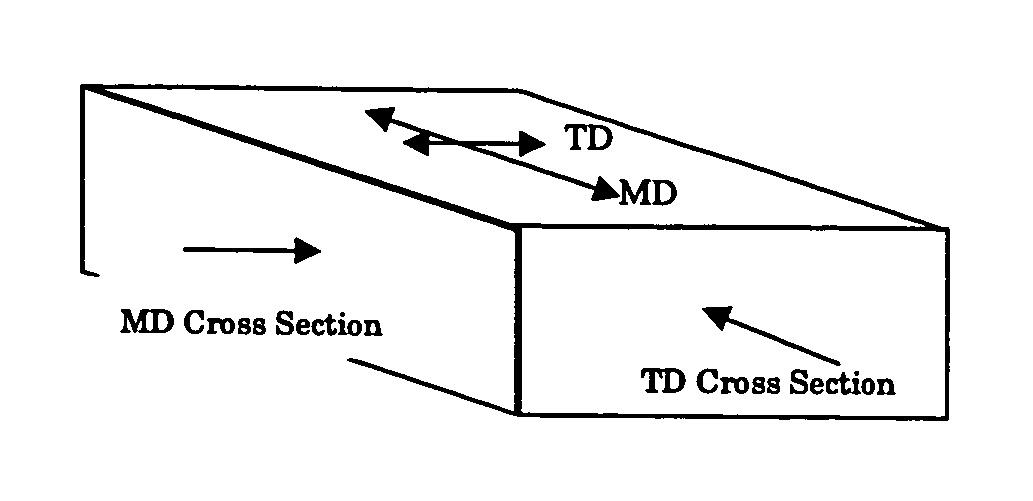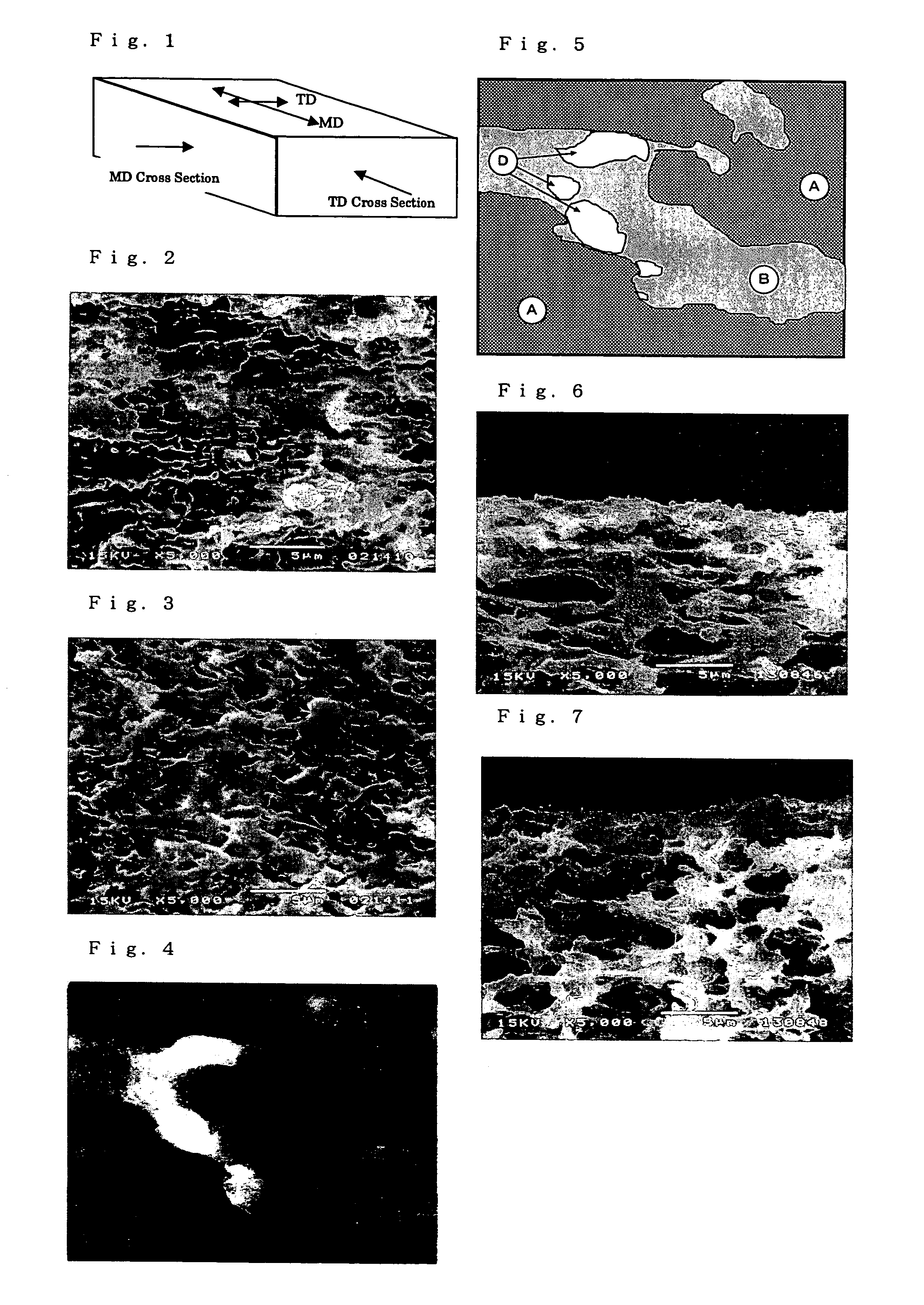Porous polyolefin membrane
a polyolefin membrane and porous polyolefin technology, applied in the field of porous polyolefin membranes, can solve the problems of affecting the pliability, acid/alkali resistance, and the properties of matrix polyolefin, and achieving the effects of improving stretching performance, stable film formation, and simplifying the manufacturing process
- Summary
- Abstract
- Description
- Claims
- Application Information
AI Technical Summary
Benefits of technology
Problems solved by technology
Method used
Image
Examples
example 1
[0089]The invention is further explained below by means of a series of examples and comparative examples, which do not limit the scope of the invention. Measurement and evaluation methods used are listed below.[0090](1) Porosity: Calculated from a bulk density determined for a 100×100 mm porous film sample, and a true density determined for a 100×100 mm film sample before stretching (nonporous) using a Toyo Seiki Densimeter D-S, by the formula:
Porosity (%)=(1−bulk density / true density)×100[0091](2) Maximum pore diameter: Regarded as equal to the maximum length of the pores in the longer axis direction as observed by scanning electron microscopy (SEM) of the cross sections in the longitudinal (MD) and transversal (TD) directions.[0092](3) Moisture permeability: Determined according to ASTM E 96.[0093](4) Melt flow rate (MFR): Determined according to JIS K 7210 at 230° C. under a load of 21.18 N.[0094](5) Air resistance (Gurley): Determined from the time required for 100 mL of air to ...
example 2
[0101]A porous polyolefin membrane was prepared as in Example 1, with the exception of the polyolefin resin (C) shown in Table 1 where Example 2 was used. The stretching characteristics of the film and the characteristics of the porous membrane obtained are summarized in Table 1.
example 3
[0102]A porous polyolefin membrane was prepared as in Example 1, with the exception of the polyolefin resin (C) shown in Table 1 where Example 3 was used. The stretching characteristics of the film and the characteristics of the porous membrane obtained are summarized in Table 1.
PUM
| Property | Measurement | Unit |
|---|---|---|
| wt % | aaaaa | aaaaa |
| wt % | aaaaa | aaaaa |
| pore-shutdown temperature | aaaaa | aaaaa |
Abstract
Description
Claims
Application Information
 Login to View More
Login to View More - R&D
- Intellectual Property
- Life Sciences
- Materials
- Tech Scout
- Unparalleled Data Quality
- Higher Quality Content
- 60% Fewer Hallucinations
Browse by: Latest US Patents, China's latest patents, Technical Efficacy Thesaurus, Application Domain, Technology Topic, Popular Technical Reports.
© 2025 PatSnap. All rights reserved.Legal|Privacy policy|Modern Slavery Act Transparency Statement|Sitemap|About US| Contact US: help@patsnap.com



